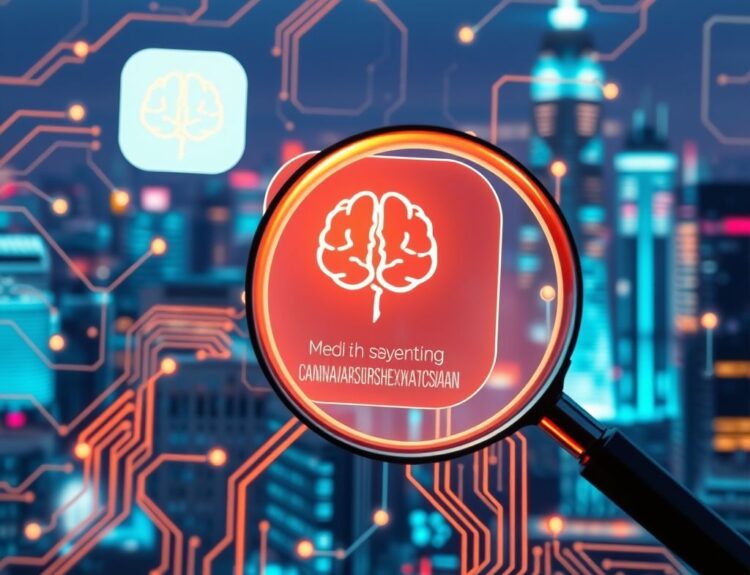Ever felt like an AI aced a test, but you’re left wondering if it truly understood the question? I stumbled upon an interesting piece from VentureBeat – “Do Reasoning Models Really ‘Think’ or Not? Apple Research Sparks Lively Debate, Response” – that really got me thinking about this.
We’re quick to celebrate AI achievements, especially when it comes to reasoning. But, as this article highlights, it’s crucial to pump the brakes and really examine how these models are getting their answers. Apple’s research, which I dug into a bit more, essentially throws a bit of cold water on some recent AI victories.
Think of it like this: imagine a student who memorizes the answers to a practice test. They might ace the actual exam, but do they really grasp the underlying concepts? The VentureBeat piece suggests some AI models might be doing something similar. They could be exploiting flaws in the test data or employing clever shortcuts instead of actually reasoning.
This isn’t just academic nitpicking. If we’re building systems that make important decisions, from medical diagnoses to financial investments, we need to be confident that they’re truly reasoning, not just mimicking.
For example, consider the widely used GLUE benchmark (General Language Understanding Evaluation). It’s designed to measure natural language understanding. However, as this paper from Harvard (https://arxiv.org/abs/1906.05273) shows, some models achieve high scores on GLUE by exploiting statistical biases in the dataset, rather than demonstrating genuine understanding. That’s a problem!
And it’s not just language models. According to a 2023 survey conducted by Stanford University (https://hai.stanford.edu/research/ai-index-2023), the cost of training cutting-edge AI models is skyrocketing, but their actual performance gains are starting to plateau in some areas. We might be reaching a point of diminishing returns if we don’t focus on quality of reasoning rather than just quantity of data.
So, what’s the takeaway? It’s not about dismissing AI advancements. It’s about being more critical and rigorous in how we evaluate them.
Here are my key insights from this whole exploration:
- Don’t jump the gun on celebrating AI “thinking.” We need solid proof, not just impressive test scores.
- Test design is crucial. Flawed tests can lead to misleading results. As the VentureBeat article emphasized, it is very important to thoroughly review AI models.
- Look beyond the surface. Dig into how the AI is arriving at its answers. Are they taking shortcuts or truly understanding?
- Focus on quality over quantity. More data isn’t always the answer. We need to prioritize building models that can truly reason.
- Embrace healthy skepticism. Question everything! It’s the best way to ensure AI systems are truly reliable and beneficial.
It’s a really exciting time to be involved in the AI space, but it’s also a time for careful consideration. Let’s make sure we’re building genuinely intelligent systems, not just really good mimics.
FAQs About AI Reasoning Models
1. What is an AI reasoning model?
It’s an AI program designed to simulate human-like reasoning and problem-solving skills. It uses algorithms and data to draw conclusions, make predictions, and answer questions.
2. How are AI reasoning models tested?
They are tested using benchmarks, datasets, and simulations designed to evaluate their ability to solve problems, understand language, and make logical inferences.
3. What are some common flaws in AI reasoning tests?
Flaws include: data bias, over-reliance on statistical patterns, lack of real-world context, and the potential for models to “game” the test instead of genuinely understanding the concepts.
4. How can we improve the evaluation of AI reasoning models?
By using more diverse and representative datasets, designing tests that require deeper understanding, and focusing on explainability – understanding how the AI reached its conclusion.
5. What are the risks of relying on AI models that don’t truly reason?
Risks include: incorrect or biased decisions, lack of adaptability to new situations, and a general lack of trust in AI systems.
6. Are current AI models truly “thinking” like humans?
Most experts agree that current AI models are not truly thinking like humans. They are excellent at pattern recognition and prediction, but lack genuine understanding, consciousness, and common sense reasoning.
7. What’s the difference between “reasoning” and “pattern recognition” in AI?
Reasoning involves understanding cause and effect, applying logic, and drawing inferences. Pattern recognition is simply identifying statistical relationships in data.
8. How can I tell if an AI model is actually reasoning or just recognizing patterns?
Look for evidence of true understanding, such as the ability to explain its reasoning process, adapt to unexpected situations, and apply its knowledge to new problems.
9. What are the ethical implications of using AI reasoning models?
Ethical implications include: bias in decision-making, lack of transparency, job displacement, and the potential for misuse.
10. What is the future of AI reasoning models?
The future involves developing models that are more explainable, adaptable, and capable of true understanding. This will require advances in algorithms, data, and our understanding of human intelligence.








